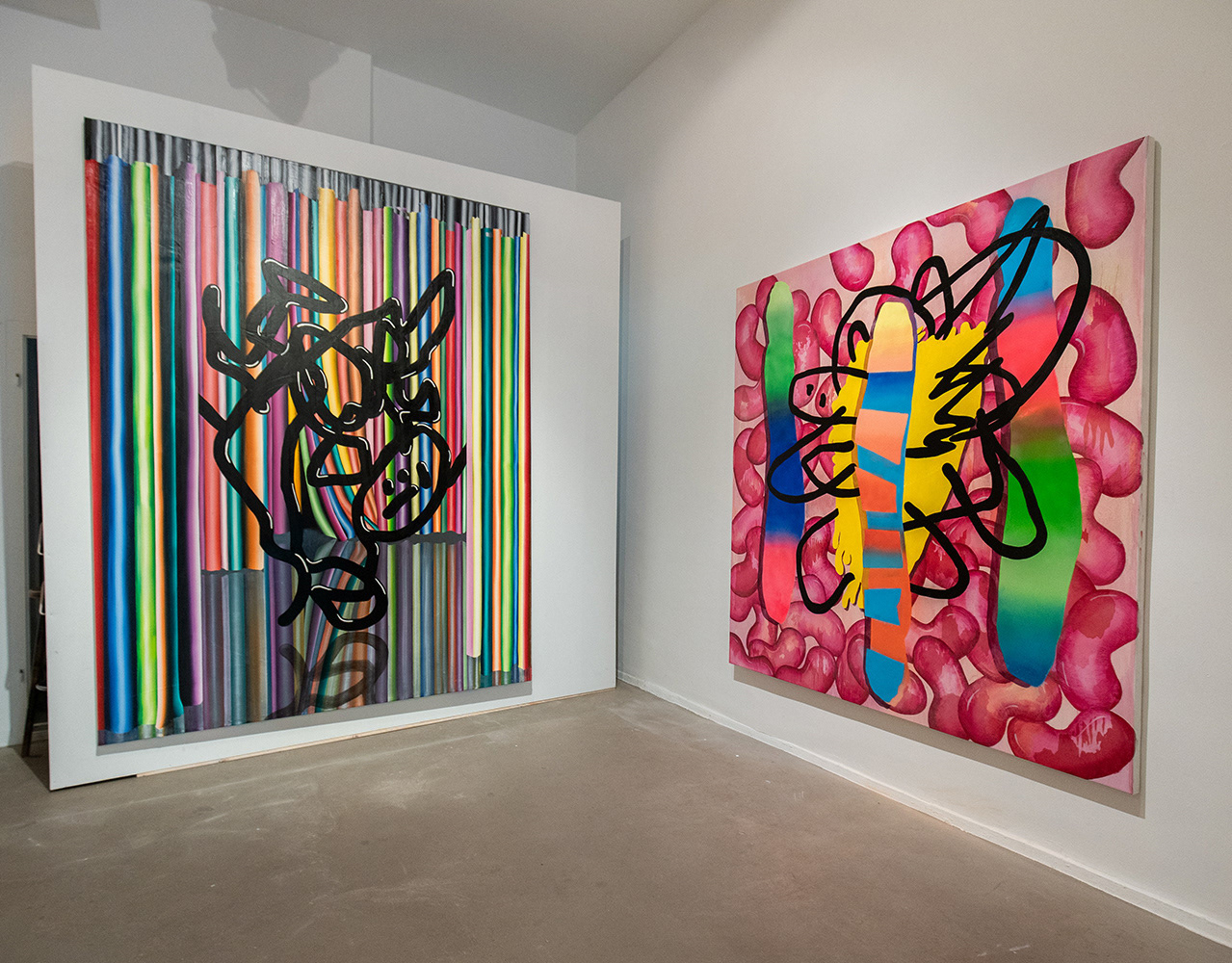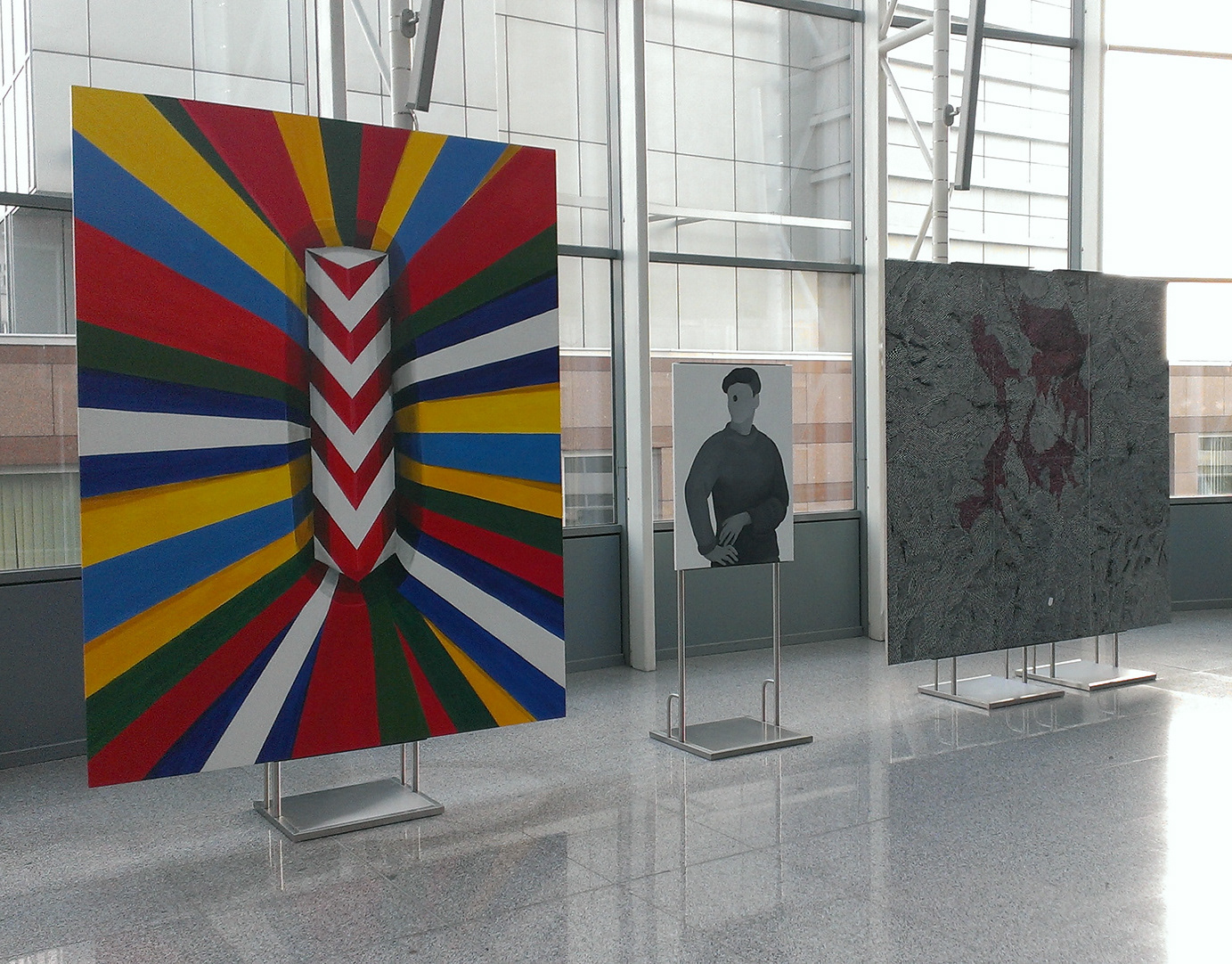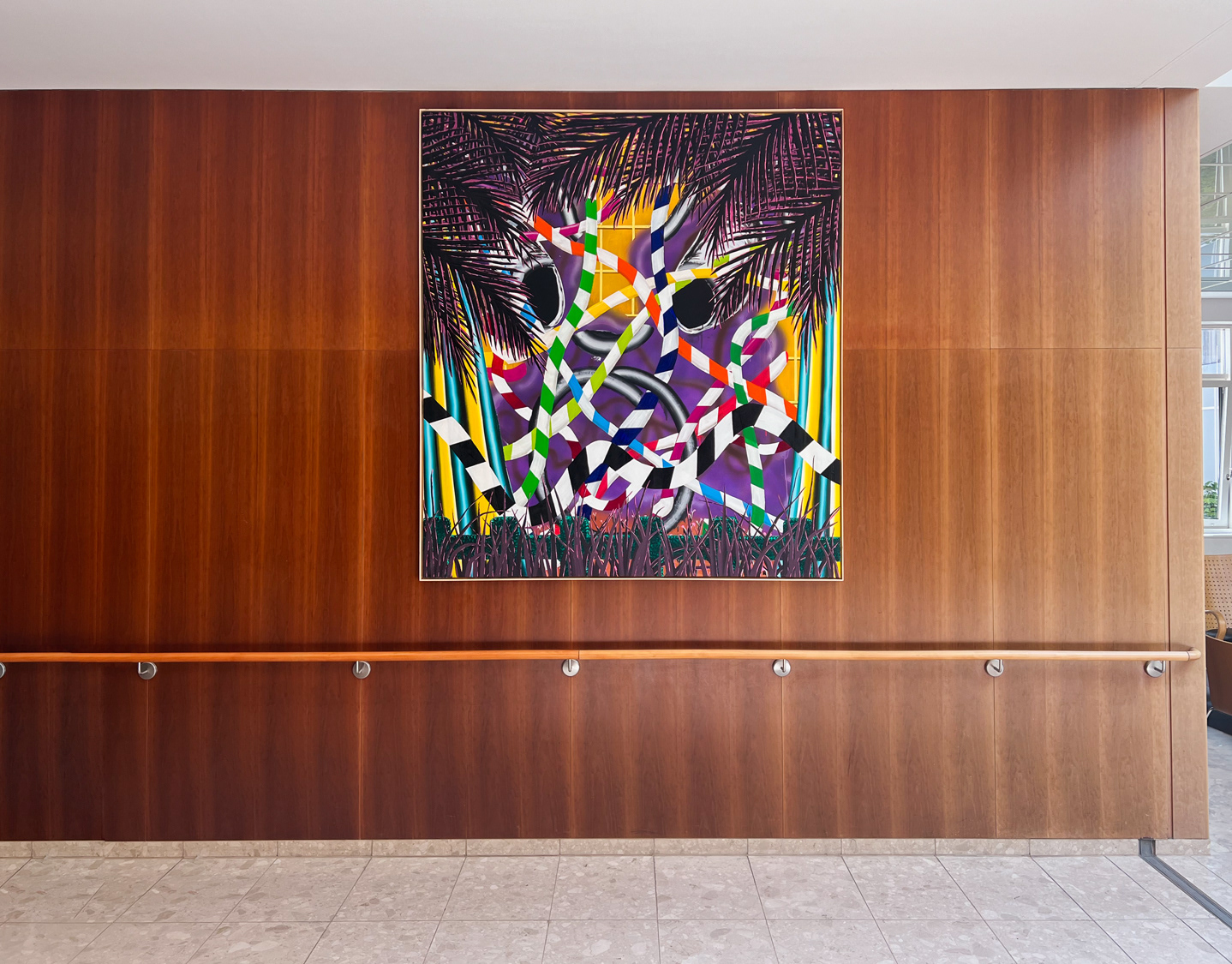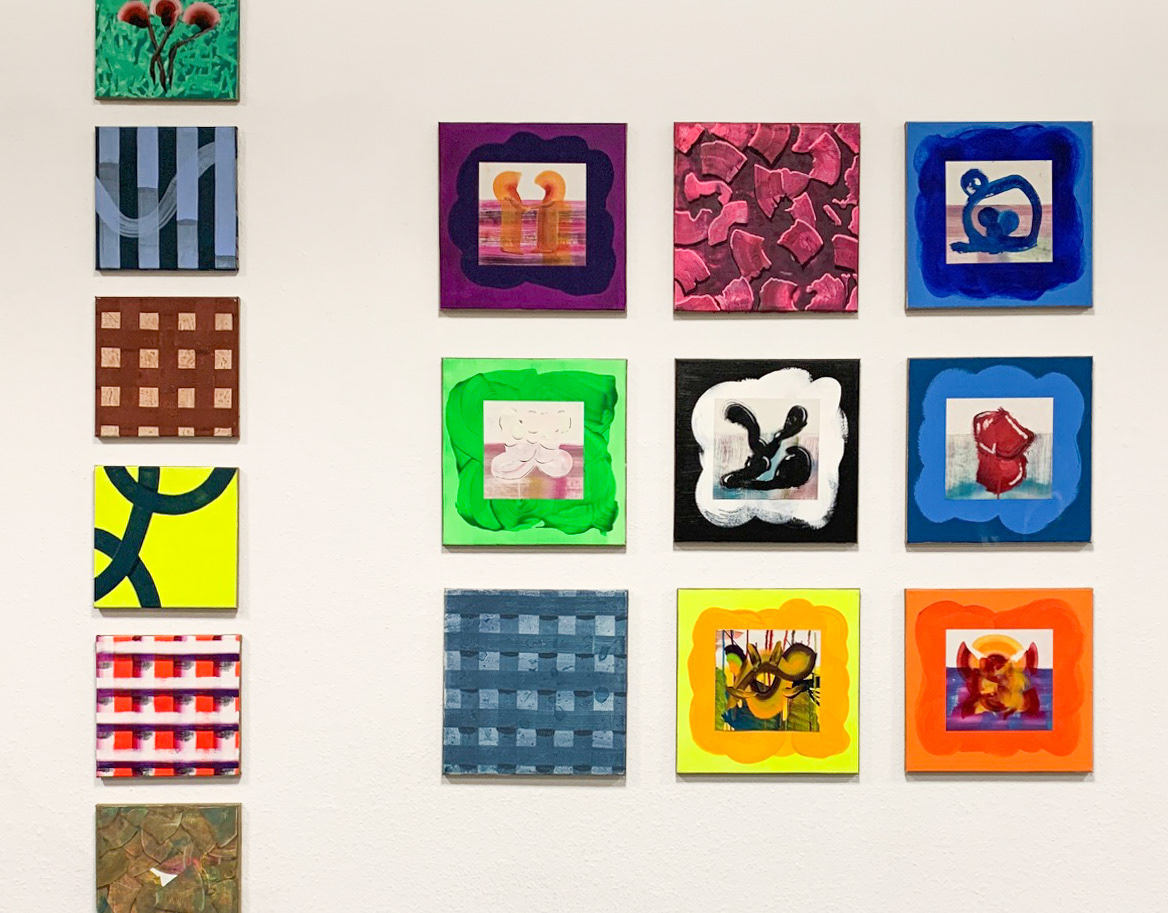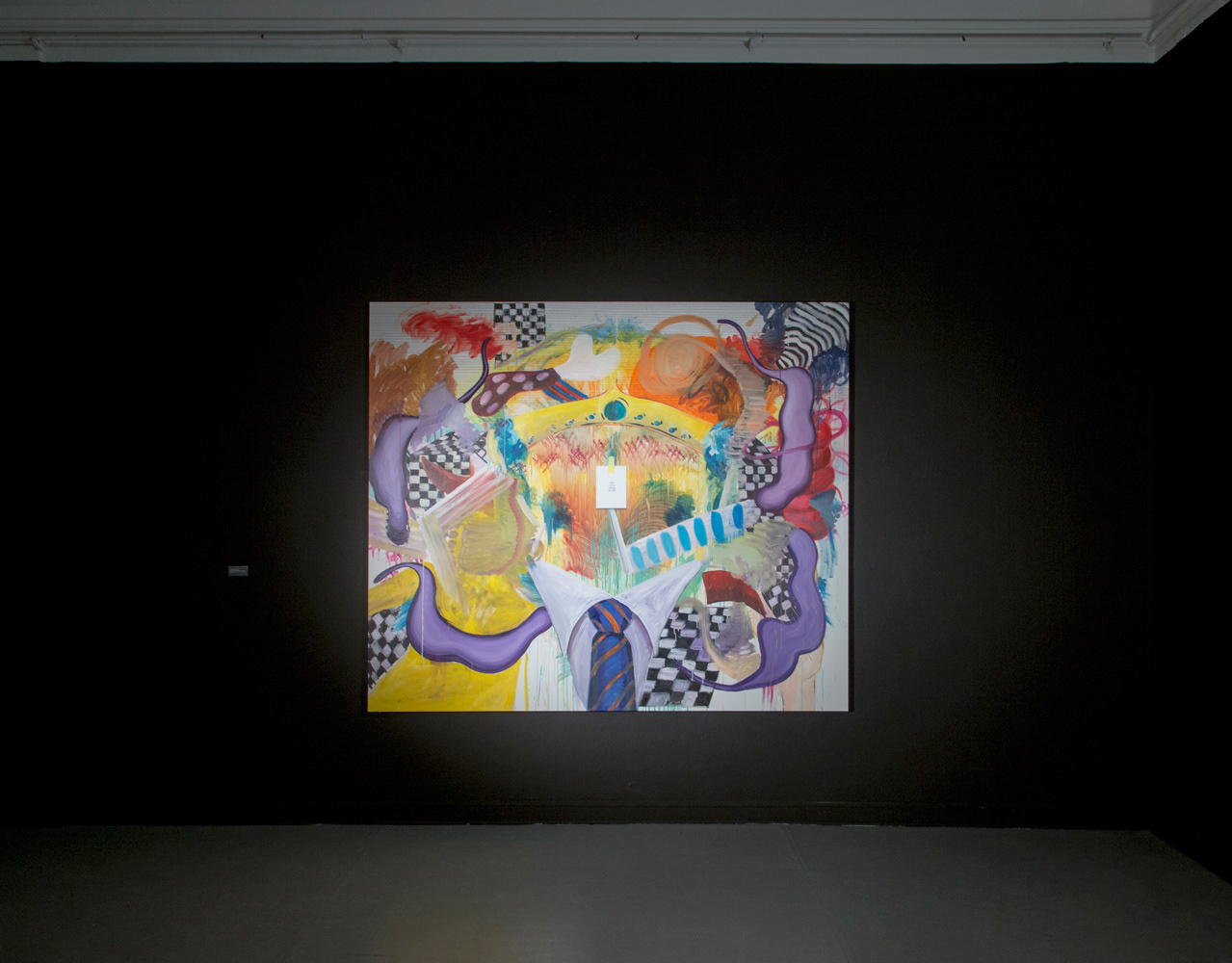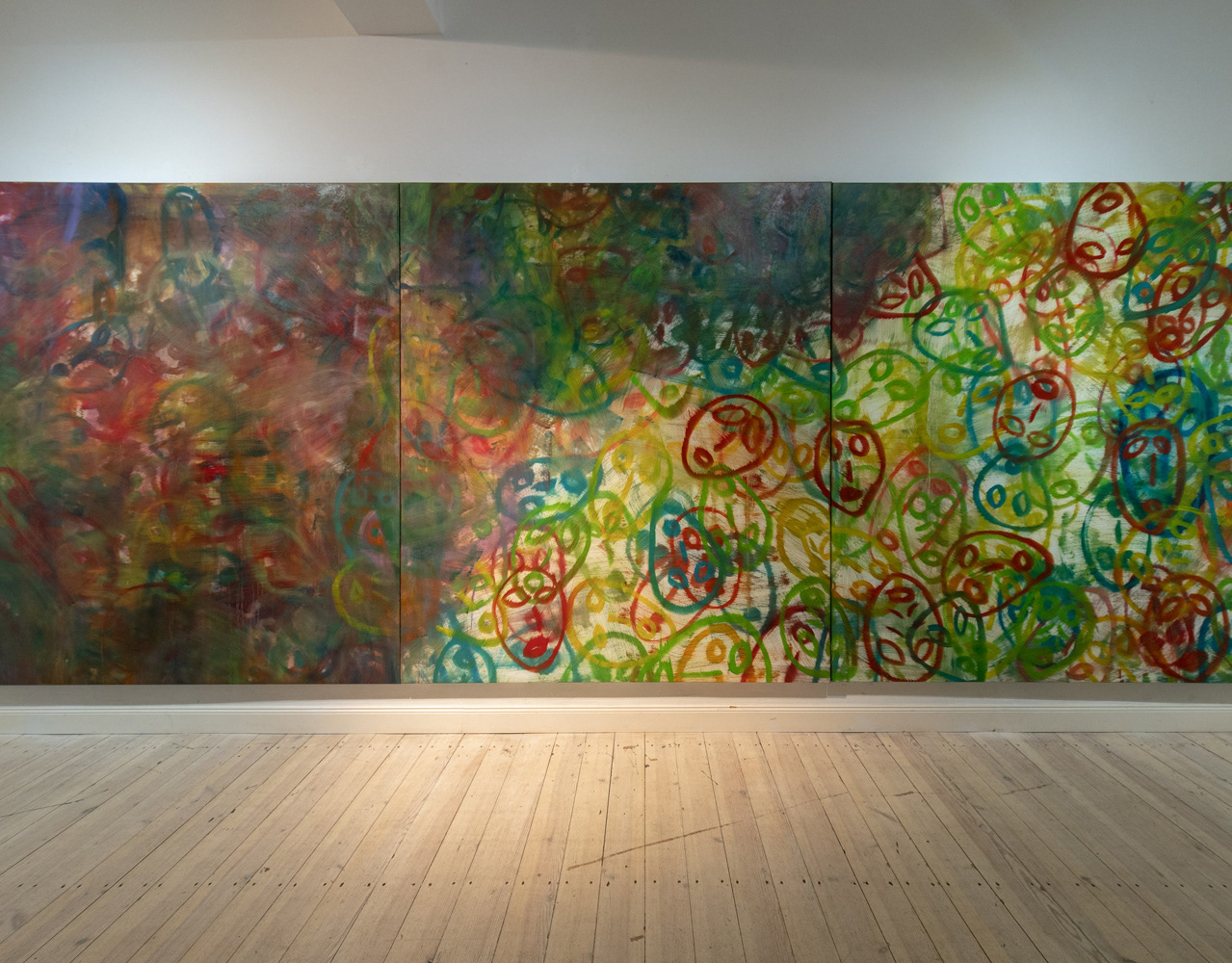Let’s start with the simple observation that the paintings of Philippe Rebosz are often without titles. A practice sometimes thought to be illegitimate among artists, but in these works, it is rather appropriate. Let’s get ready for joint participation, active viewing, searching for meaning, or for allowing these colorful compositions to carry us away. Let’s also be open to paradoxes, contradictions—because here there are many—but if one were to look at them accordingly, they are actually what binds the artist’s work... paradoxically, of course. First, although certain canvases of Rebosz remain untitled, the exhibition inside the Visiting Gallery in Warsaw bears the potent title of “Kafkaesk.” The German adjective defines nothing less than a “Kafka situation” in which the individual is driven by an unspecified external force. In works such as “The Trail” or “The Castle” , FranzKafka created an extremely poignant description of the world, which, as a metaphor, could refer both to the power of bureaucracy, to totalitarian systems, but also to the inner feeling of danger and overwhelming reality. The vision is rather somber, but a first glance at the bright colors of Rebosz canvases this vision seems unfathomable.
Let’s look at this from a different angle; the outside world is very colorful today, almost like a psychedelic trip, an uninterrupted sequence of images changing on millions of screens. This is the oppression of the digitalage, an overwhelming stream of information, photos and movies, power without the body, power-network, dispersed and growing constantly. The paintings of Philippe Rebosz appear to be a personal reaction to reality, and we get the impression that not only his mind, but his entire organism is getting rid of this excess, expelling all the cumulated fragments of images —layer-by-layer. Abstract stains leak into and intertwine with realistic elements and the translucent paint allows you to see all the stages of the painting. First, we recognize what is closer to reality: eyes or pop-art straws for beverages, then, we notice the texture of a fur or net, and then finally, the objectless stains, some of which also become “something.” The artist admits to often commencing his paintings by splashing thick globs of paint on a clean canvas. In a way, from the beginning he is subjecting his creative process to chance — reminiscent of American Expressionists—leading him to further steps. Perhaps in this way the artist is searching for Kafka’s impenetrable forces within himself, or maybe the image itself has power over him. There is an organic connection between the creator and his work and, at the same time, the constant struggle for control over what is happening. Crucial here is the decision when to finish such a composition, but again Rebosz gives only ambiguous answers. Sometimes he deliberately finishes a work without finding an intellectual or formal justification for adding more elements, and at other times, the image itself “stops responding,” deeming itself as complete. However one perceives the work of Philippe Rebosz —whether as an inner battle occurring in the artist’s mind and body, or as a reaction to the outside world—in these colorful compositions exists Kafka’s oppressive atmosphere. Eyes look at us, then there are barbed wires and nets, disturbing “unknown” spills—and there is chaos, seducing us with a series of colors and patterns. And wanting to or not, consciously or not, we realize that Kafka is still right, except that the dreary burgstalls and stacks of official papers have changed into compulsive overproductionand a desire for everything that the world offers us. Paradoxically, howelse if not, it is simultaneously a horrifying and fascinating vision.
Anna Ciabach
Installation view "KAFKAESK", Wizytujaca Gallery, Warsaw, Poland, 2018
Installation view "KAFKAESK", Wizytujaca Gallery, Warsaw, Poland, 2018
Installation view "KAFKAESK", Wizytujaca Gallery, Warsaw, Poland, 2018
Installation view "KAFKAESK", Wizytujaca Gallery, Warsaw, Poland, 2018
Installation view "KAFKAESK", Wizytujaca Gallery, Warsaw, Poland, 2018
